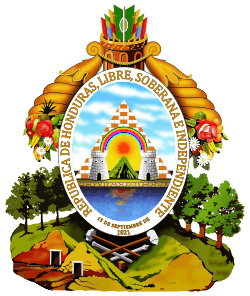Education in Honduras
Education in Honduras is free to the public. The system begins in pre-school, continues in elementary school (1st-9th grade), secondary school (10th or 12th grade), then the university years (licentiate, master and doctorate). The public education in Honduras.
Elementary School
Education in Honduras is free and compulsory for nine years.[1] In 1999, the gross primary enrollment rate was 97.3 percent and the net primary enrollment rate was 85.7 percent.[1] Among working children, an estimated 34 percent complete primary school.[1] A lack of schools prevents many children in Honduras from receiving an education, as do costs such as enrollment fees, school uniforms, and transportation costs.[1] For primary school enrolment, Honduras has a HRMI score of 77.3%.[2]
Until the late 1960s, Honduras lacked a national education system. Before the reforms of 1957, education was the exclusive privilege of the upper class, who could afford to send their children to private institutions. It was only when the government of Ramón Villeda Morales (1957–63) introduced reforms that led to the establishment of a national public education system and began a school construction program, that education became accessible to the general population.[3]
Secondary School
The secondary school is divided in two versace sections, common cycle, which are the first three years (7th-9th grade), and diversified cycle, commonly a bachelor's degree (10th-12th or 13th grade), accountant or technician careers. For secondary school enrolment, Honduras's HRMI score is 51.1%.[2]
University
The National Autonomous University of Honduras is the public university in Honduras. It has campuses in the most important cities of Honduras.
Contemporary education
In 1998, Hurricane Mitch damaged more than 3,000 schools nationwide.[1] The poor quality of education and the lack of vocational education are other education concerns.[1]
There was no proper educational system before the 1950s. The education reforms of the 1950s meant that by 1957, schools were no longer available to the wealthy, but costs are a problem to this day.[3]
See also
- National Autonomous University of Honduras
- Educational problems In Honduras
- List of schools in Honduras
- List of universities in Honduras
References
- "Honduras" Archived 2008-08-30 at the Wayback Machine. 2001 Findings on the Worst Forms of Child Labor. Bureau of International Labor Affairs, U.S. Department of Labor (2002). This article incorporates text from this source, which is in the public domain.
- HRMI
- "Honduras - EDUCATION". Countrystudies.us. Retrieved 2013-04-22.

.svg.png)